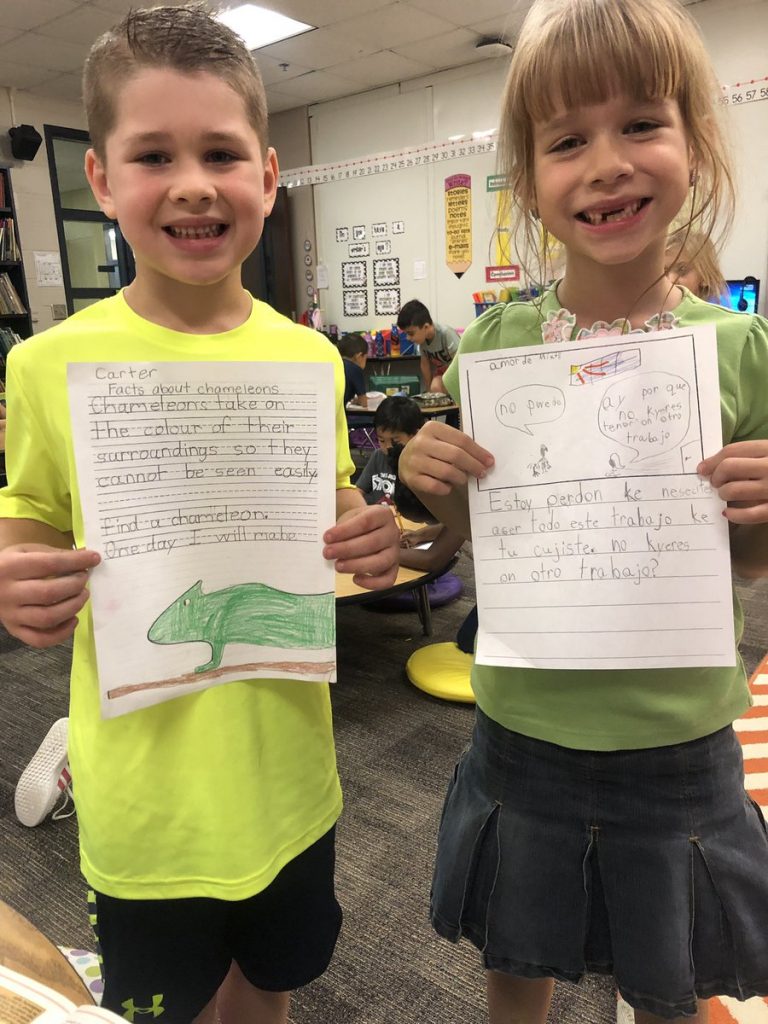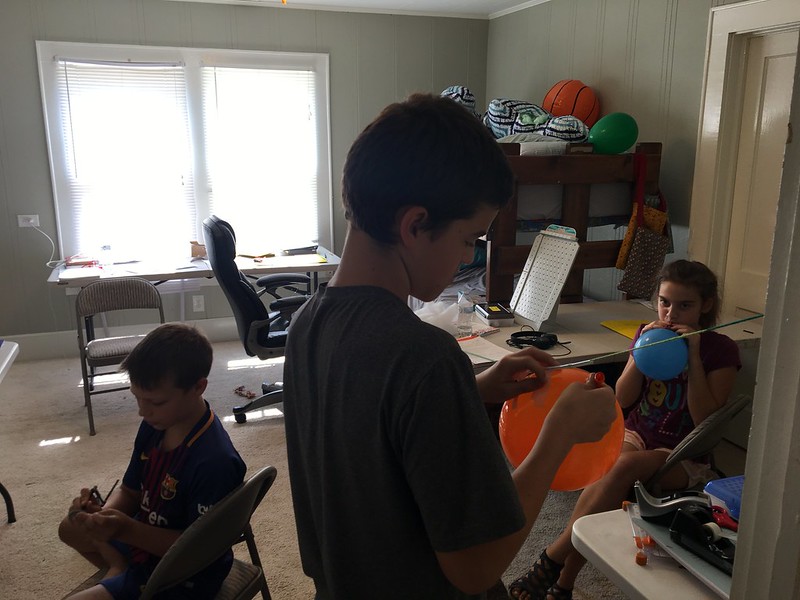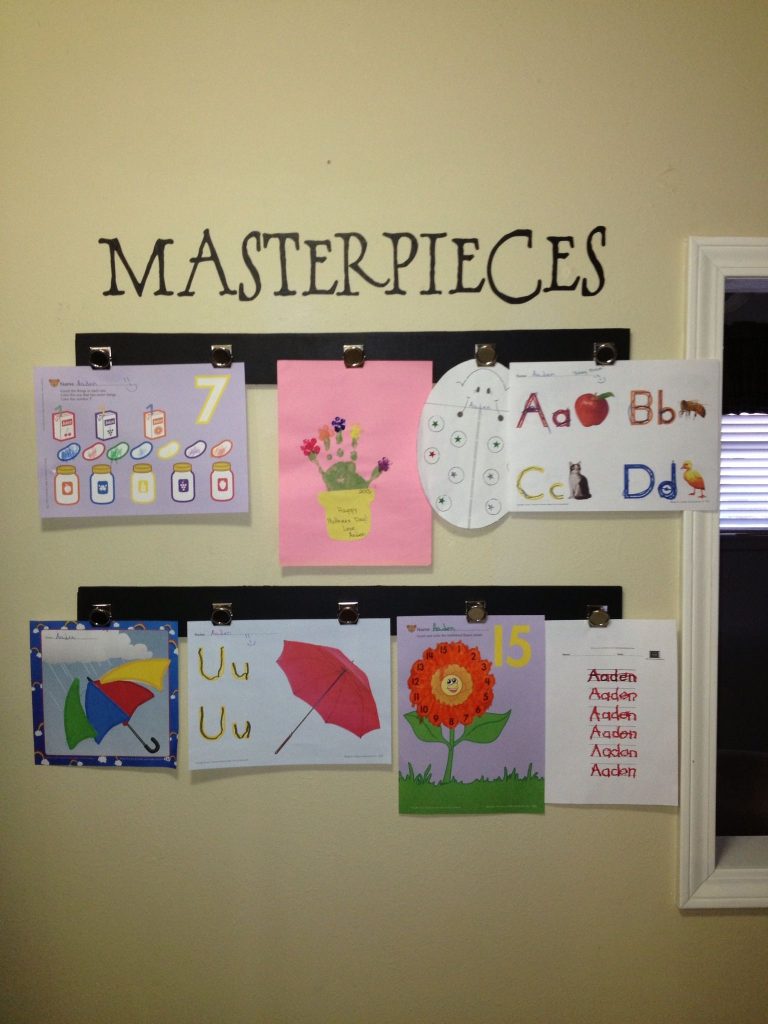A former blogger, Christine, wrote a post called “Product vs. Process” which talks about her dilemma as a homeschooling parent over feeling a strong need to have a product after every learning experience, whether because of her teacher training or proving to others an education is happening.
This is a battle I’m constantly having with myself. I think it comes partly from my time spent teaching elementary school where, of course, there always needed to be a product so I could judge how each child was doing and whether learning had taken place, and also just because the school system said so. But I also think that it is a more left-brained thing to want to have an end-product to sum up learning done or to put closure on the learning. Maybe not, maybe it’s just me.
Christine, Thinking Things Through
An early homeschooling experience, the second of the two most influential ah-ha moments my first year, quickly came to mind as I read over the post, and I wanted to share that with everyone in case it can help someone else at this same juncture.

As I first began to plot out the wonderful experience I would call homeschooling with my then unsuspecting 5 year old firstborn son, I, too, had visions of amazing “products” to show off share with any naysayers interested friends or family. I think the focus on these wonderful projects may have stemmed from a three-fold source: The first is the conditioning received while attending school that every learning experience results in a product, as the referenced post agrees. The second is my left-brained learning style, as Christine also mentions in her post, that truly enjoys “show-me-work”, as I have termed it. When I was in school and you gave me a worksheet full of math problems, I would get all giddy inside! And, third, my external perfectionism (which is different from the internal perfectionism often exhibited by right-brained learners) that shows itself when I am planning out “the perfect experience.”
And so my left-brained systematic perfect plans began for our first semester of schooling, complete with unique and interesting “show-me-work” prospective products to later display with pride for all to see. What’s funny about this is that I had just spent most of the summer reading any and all materials I could get my hands on regarding unschooling. I had latched onto the unschooling style for our homeschooling endeavor because it most reflected how learning had occurred in our home up until that point. The reason I was considering homeschooling in the first place was that it was working so well for my oldest son. And, yet, because it was such a fun thing to contemplate, I was busy hyper-planning all these great projects and learning moments, all divided by subjects, and even . . . gasp . . . using a timer(!) to indicate when we could move to the next subject.
It began eager enough on the part of my oldest son as he considered homeschooling a great idea since he figured things would continue as usual, but maybe with some fun things thrown in with my involvement. It didn’t take long for his right-brained learning style to reject my left-brained ideas . . . no matter how creative! I remember one project in particular. It was logged under social studies and it was an “All About Me” book that we would take pictures of him indicating various elements about who he is and then he would write a sterile sentence (you know, for handwriting) sharing information about what the picture shows. Now, of course this was a good plan because don’t all kindergartens across the nation do an “all about me” unit? And I would do the same thing, but better!
It all started falling apart with the first picture. My oldest was having nothing to do with these posed pictures to go in my fabulous book about him. After the first picture, I had to resort to bribing encouraging him already! At about the fourth picture, this wasn’t even working. Now, I was having to resort to all out coercion threats force (I give up)!
I remember the specific moment that my ah-ha moment entered. I was stubbornly persistently working on the show off fancy cover made from wallpaper samples since my oldest was all out refusing to be convinced of the worth of this project cooperate with the project. I remember mumbling incoherently musing to myself about how quite lovely and noteworthy the project really was and how could he not see the ego booster value in it, and then it struck. I had one of my out-of-body experiences where I could see this insanely driven focused mother hunched over this useless project while simultaneously seeing the joyful intent of my oldest son in the next room pursing his then-dinosaur interest with passion and purpose. What’s wrong with this picture, I realized? And then I remember reading something in one of the unschooling materials that went something like this: If you think something is so wonderful, then do it yourself! And that’s exactly what I found myself doing, by default, and yet, I then looked closely at the project, and it was clear! I didn’t even think this project was worth it; I had created it strictly as fancy show-me-work.

I was determined that I would not usurp the joy of learning by interjecting prideful pursuits, conditioned thinking, or personal preferences into my son’s learning life. Instead, I would give value to his process, his time frames, his interests, and how that looks for him. I would put the extra time into having conversations with him about what is on his mind and in his mind, take an interest in his pursuits and show my support through sharing my perspective and wisdom toward additional resources available, and be in awe over what he shows me he knows in the way he wants to share it.
But is it [a product or show-me-work] really important? Maybe for some learners it is. Maybe for some it isn’t necessary that they do something with what they have learned to have really learned it. Maybe they don’t need to use it or apply it or work with it or display it in order for learning to really have occurred.
Christine, Thinking Things Through

My oldest son showed me what real learning looks like: The joy is in the process; the product is personal. That didn’t mean that products didn’t emerge or get pursued, whether by his initiation or my suggestion. It simply means that those things came as a result of meaningful pursuits, not sanitized procedures that led to an end product. It also meant that I needed to look beyond the valued expression typical of show-me-work to see processes and products worthy of noting as a foundation or skill-builder or work-in-progress for this particular child’s gifts.
My oldest son loves to learn; but resists teaching (very common for a right-brained learner). I was fortunate to have a son who was just as passionate about what he wanted to learn and how and when as I was eager to learn to be a homeschooling parent (which is where I ended up steering my perfectionism . . . on myself to be the best homeschooling support parent in learning about and understanding each child in my care). He has been an excellent and informative teacher to me.
If you benefited from this content, please consider supporting me by buying access to all of my premium content for a one-time fee of $15 found here. This will even include a 50% off e-mail link toward a copy of my popular The Right Side of Normal e-book (regular price is $11.95)!







Pingback: On Being Available |
Pingback: How to Shift From School Think to Engaged Learning |